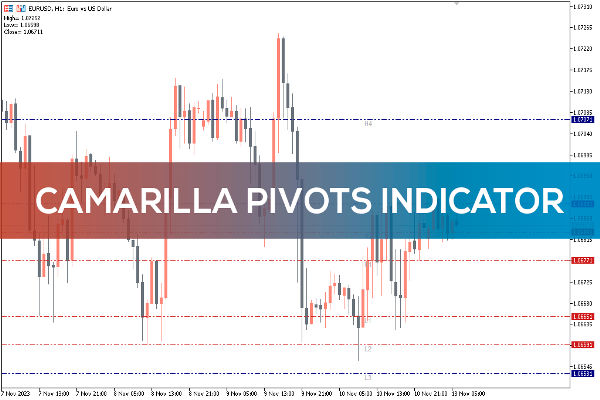Finding potential stocks is a joyful thing. Imagine that you have found a
potential stock, successfully earned a fortune, and achieved financial freedom.
Isn’t this a very pleasant thing? Maybe you have imagined that if you were here
and there, if you bought this potential stock at the right time, the results
would be wonderful. However, it is easier said than done to find potential
stocks, but it is actually quite difficult. Finding a potential stock in the
stock market is like choosing a lifelong partner. You need to carefully consider
all conditions. This article will discuss in depth how potential stocks are
discovered.

Profitability: Numbers tell the truth
The core of finding potential stocks is not complicated. The key is to find a
company with good long-term profitability. Although there are many analysis
frameworks and indicators, the essence is very simple, which can be summed up as
"core three plus one". The "three" here refers to three quantitative indicators,
and the "one" refers to a non-quantitative qualitative indicator.
-
Net Profit Margin: The Key to Profitability
A company's profitability can be measured through some numerical indicators,
such as gross profit margin, net profit margin, and operating profit margin.
Among them, net profit margin is what investors are most concerned about. It
represents the proportion of corporate net profit to total revenue. Take a milk
tea shop as an example. If the price is ten yuan a cup and it can only make one
yuan after deducting all costs, then the net profit margin is 10%. On the other
hand, another milk tea shop sells for 20 yuan and ultimately earns 10 yuan, with
a net profit margin of 50%. While cheap prices are more attractive to consumers,
companies with higher profit margins are more attractive to investors because
they are better able to withstand various risks.
-
Industry Comparison: Understanding Industry Averages
To determine a good net profit margin, you need to compare it to the industry
average or similar companies. Due to different operating models in different
industries, net profit margins vary greatly, so it is necessary to compare the
company's net profit margins with the industry average. For example, the net
profit margin of all A-share and US-share companies is roughly between 5% and
10%, while the net profit margin of finance, chip, software, tobacco, medicine,
and other industries may reach more than 20%. Investors should consider industry
averages in a specific industry when selecting potential stocks.
For some fast-growing companies, especially Internet companies, they may
invest a large amount of money in subsidies or research and development during
the rapid expansion stage, resulting in negative net profits. In this case, you
can focus on the gross profit margin, which is the profit margin after all
direct costs, to get a better idea of the company's profitability.
-
Financial Health: The Importance of Current Ratios
In addition to profitability, the financial health of the company is also
crucial. The current ratio is a key measure of a company's financial health and
is calculated as current assets divided by current liabilities. The larger the
current ratio, the more liquidity the company has and the healthier its
financial position. It is generally recommended that the current ratio be
greater than 1.5 to ensure that the company can cope with short-term
liabilities.
Reasonable Price: Find Undervalued Companies
A good company does not necessarily equal a good stock, so the price of the
company needs to be considered. The price-to-earnings ratio (P/E value) is the
most common indicator for evaluating stock prices. It is calculated by dividing
the stock price by the net profit. The lower the P/E value, the lower the stock
price is. There are large differences in P/E values across different industries,
so comparisons need to be made with companies in the same industry or industry
averages.
Moat: the company’s competitive advantage
In addition to numerical indicators, one of the non-quantitative indicators
of potential stocks is the moat. Moat refers to some unique characteristics or
advantages that a company has that enable it to maintain long-term
competitiveness in a highly competitive market. This non-quantitative indicator
may be more important than the previously mentioned numbers. The moat can be
understood as the company's threshold or core competitiveness. When a business
model is proven to be profitable, whether it is easy for other companies to
imitate it is the key to the moat, and it is also one of the considerations for
where potential stocks are discovered.
-
Brand power: the added value of the brand
Brands are one of the strongest moats in the consumer goods and retail
industries. The brand is not just the product itself but also gives it unique
added value. For example, the brand value of Kweichow Moutai enables it to be
sold at a high price, but consumers are still willing to buy it. Investors
should consider the influence of the brand when selecting potential stocks.
-
Network Effects: The Advantages of Scale
The network effect is a powerful moat. When the product scale reaches a
certain level, its influence will be further enhanced. For example, WeChat has a
strong network effect in the communication APP field, and users are more willing
to use it than other competitors.
-
User stickiness: the key to retaining users
User stickiness refers to a user's loyalty to a certain product, also
commonly known as switching costs. Once users become accustomed to one product,
they may be reluctant to switch to other products. This provides the company
with a steady revenue stream and is a weak but durable moat.
-
Other moats: patented technology, limited approval, etc
In addition to brand, network effects, and user stickiness, there are also
some obvious moats, such as patented technology, difficult license approval, and
high initial investment costs.
Don’t focus on small gains at the moment; take a long-term view
In the end, when choosing potential stocks, don't look for small, immediate
profits, but take a long-term view. The core three plus one, namely
profitability, reasonable price, moat, and the company's competitive advantages,
will help investors make more informed decisions. Remember, don't let short-term
gains cloud your judgment of the company's long-term value. On the journey to
the stock market, only by acting cautiously and keeping a clear mind at all
times can you gain longer-term satisfaction in investing.
Disclaimer: This material is for general information purposes only and is not intended as (and should not be considered to be) financial, investment or other advice on which reliance should be placed. No opinion given in the material constitutes a recommendation by EBC or the author that any particular investment, security, transaction or investment strategy is suitable for any specific person.







